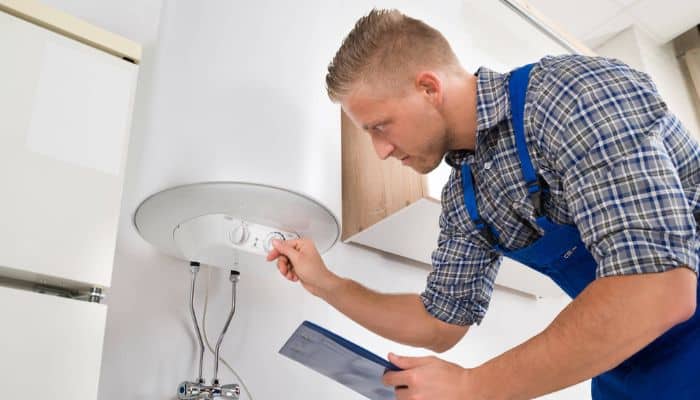Installing a water heater may seem simple, but even small mistakes can lead to costly repairs, safety issues, or poor performance down the line. Whether you’re replacing an old unit or setting up a new one, understanding what not to do can save you time, money, and headaches. Let’s look at the most common water heater installation mistakes homeowners make—and how to avoid them for a safe, efficient, and long-lasting system.
1. Skipping the Manufacturer’s Installation Instructions
Every water heater model is different. One of the biggest mistakes homeowners make is ignoring the manufacturer’s installation guide. This manual provides crucial details about venting, pressure relief, and electrical or gas connections.
to follow these instructions can lead to inefficiency or even void your warranty. Always take the time to read through and follow each step carefully—or have a professional water heater installer handle it for you.
2. Using the Wrong Size Water Heater
Many homeowners assume that “bigger is better” when it comes to water heaters. Unfortunately, that’s not always true. An oversized water heater can waste energy, while one that’s too small will struggle to meet your household’s hot water needs.
Before purchasing a new unit, calculate your family’s peak water usage and match it with the heater’s capacity. A qualified technician can help you determine the ideal tank size for consistent and efficient water heating.
3. Incorrect Placement and Clearance Issues
Location matters. Installing your water heater too close to walls, furniture, or appliances can restrict airflow and make maintenance difficult. Gas-powered units especially need proper ventilation to prevent carbon monoxide buildup.
Make sure to leave adequate clearance around the unit as per manufacturer and local code requirements. If you’re unsure where to place it, consult a professional offering water heater installation near you for expert guidance and safe positioning.
4. Improper Venting Setup
A faulty venting system is one of the most dangerous installation errors. For gas water heaters, poor vent connections can lead to backdrafting—where harmful gases like carbon monoxide re-enter your home.
Always ensure that the vent pipes are tightly sealed, sloped upward, and lead directly outdoors. Use approved vent materials and check for any signs of corrosion or blockage. For electric units, ensure that all wiring connections are secure and grounded.
5. Neglecting the Expansion Tank
Many homeowners skip the expansion tank, thinking it’s optional. In reality, it’s a critical safety component. When water heats up, it expands—and without an expansion tank, the extra pressure can damage pipes or the heater itself.
Modern plumbing systems often have check valves or backflow preventers that stop pressure from escaping, making an expansion tank essential for system safety and longevity.
6. Forgetting to Flush the Tank
Sediment buildup is a silent performance killer. Over time, minerals from your water supply settle at the bottom of the tank, reducing heating efficiency and causing rumbling noises.
Flushing your water heater at least once a year helps maintain its performance and prolongs its lifespan. You can follow this simple guide on how to drain a water heater to do it correctly and safely. This small step can prevent costly repairs and ensure smooth water heating service year-round.
7. Ignoring Local Building Codes
Each state or city has specific plumbing and electrical codes for water heater installation. Ignoring these can lead to fines, safety hazards, or failed inspections.
Common code requirements include proper venting, pressure relief valves, drain pan installation, and adequate earthquake strapping (in certain areas). Before starting the installation, check your local regulations—or better yet, let a certified water heater installer handle the job professionally.
8. Not Testing the Temperature and Pressure Relief Valve
The temperature and pressure (T&P) relief valve is a vital safety feature that releases excess pressure to prevent tank explosions. Many DIY installers either overlook testing it or install it incorrectly.
After installation, always test the T&P valve by lifting the lever slightly to ensure water flows freely. If it doesn’t, the valve may need to be replaced immediately.
9. Using Incorrect Pipe Materials or Connections
Mixing incompatible materials—like connecting copper directly to galvanized steel—can cause corrosion and leaks. Always use dielectric unions or fittings when joining dissimilar metals.
Also, ensure all connections are properly tightened but not over-torqued, as this can damage threads and create leaks. Quality materials and careful installation make all the difference in the long-term performance of your water heaters.
10. Skipping a Final Inspection and Leak Test
Once everything is connected, never skip the final inspection. Check for leaks at every connection, inspect the venting, and ensure the thermostat is set between 120°F–130°F for safety and energy efficiency.
If you smell gas or notice water around the base, shut off the supply immediately and contact a professional. Even minor leaks can escalate into major problems if left unattended.
11. Not Hiring a Licensed Professional
DIY installation might seem like a cost-saving option, but one mistake could cost you much more in repairs, wasted energy, or safety hazards. Licensed professionals not only ensure proper installation but also handle permits, code compliance, and post-installation testing.
Working with an experienced installer also gives you peace of mind that your warranty remains valid and your home stays safe.
12. Forgetting Regular Maintenance
Even the best installation can’t prevent future issues if the unit isn’t maintained properly. Schedule annual inspections to check for corrosion, leaks, or sediment buildup.
Professional maintenance includes checking the anode rod, flushing the tank, and verifying all safety controls. This simple routine can extend your heater’s lifespan by several years and improve your home’s water heating service efficiency.
Conclusion: Avoiding Mistakes for a Reliable Hot Water System
A well-installed water heater means comfort, safety, and lower utility bills. Avoiding the above mistakes ensures that your system runs smoothly for years without costly breakdowns.
If you’re unsure about any step in the process, don’t hesitate to call a trusted local expert. The right professional can guide you through every stage—from choosing the right size and model to final inspection and ongoing care.
A properly installed water heater isn’t just about hot water—it’s about peace of mind, energy efficiency, and safety for your entire household.


 855-410-TECH(8324)
855-410-TECH(8324) APPLY FOR FINANCING
APPLY FOR FINANCING